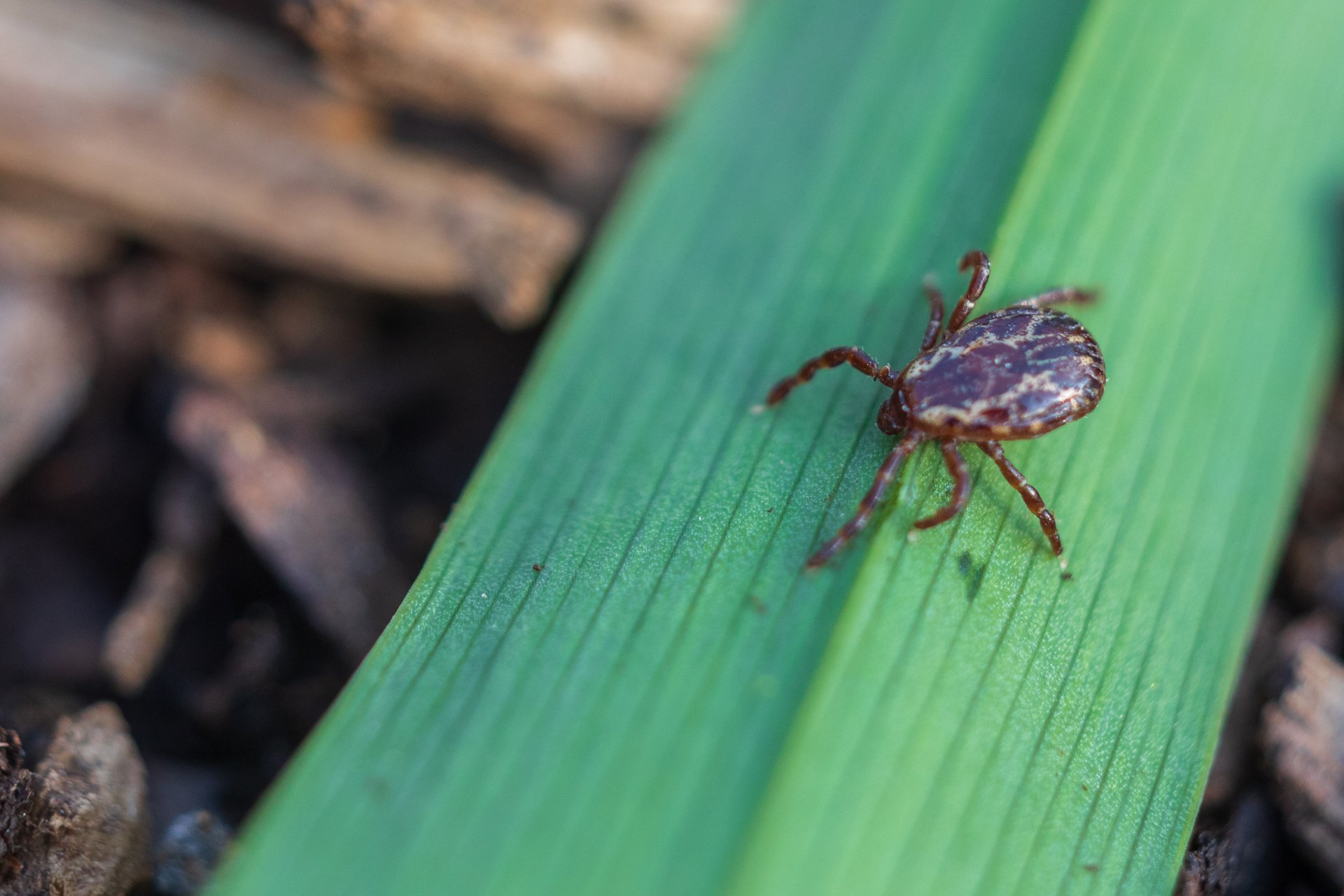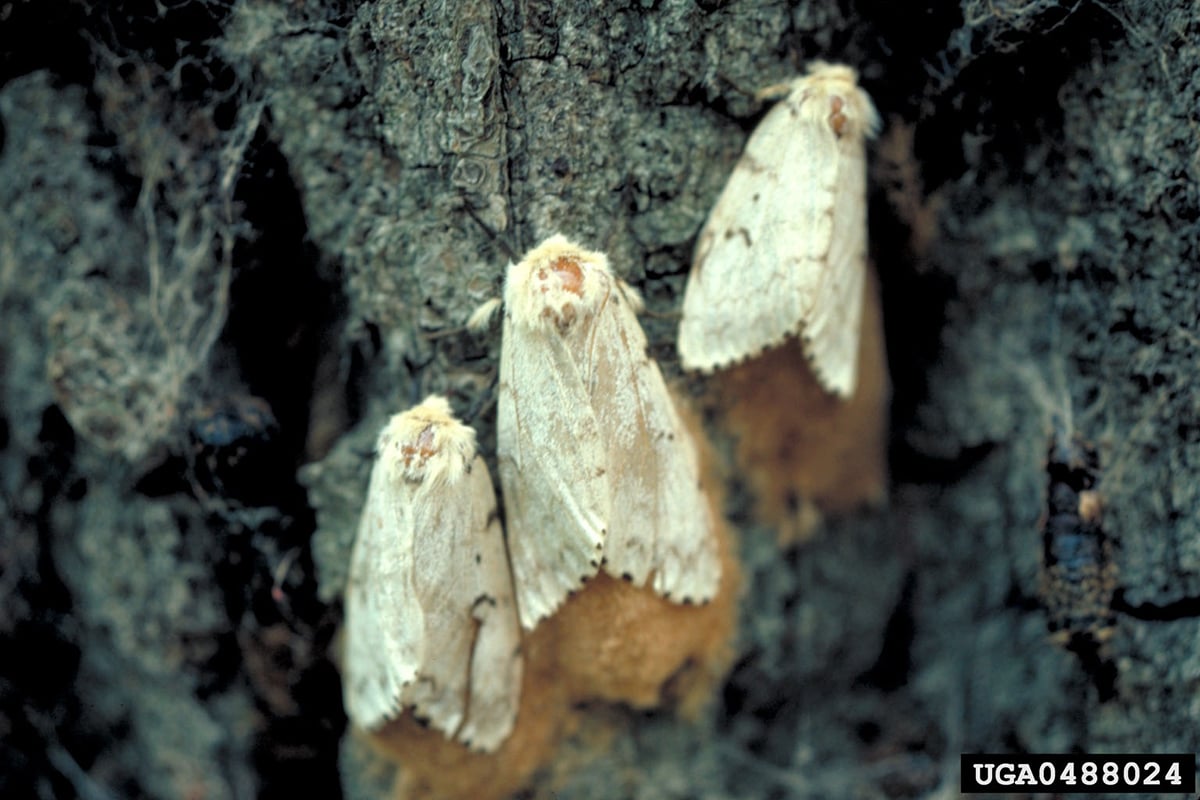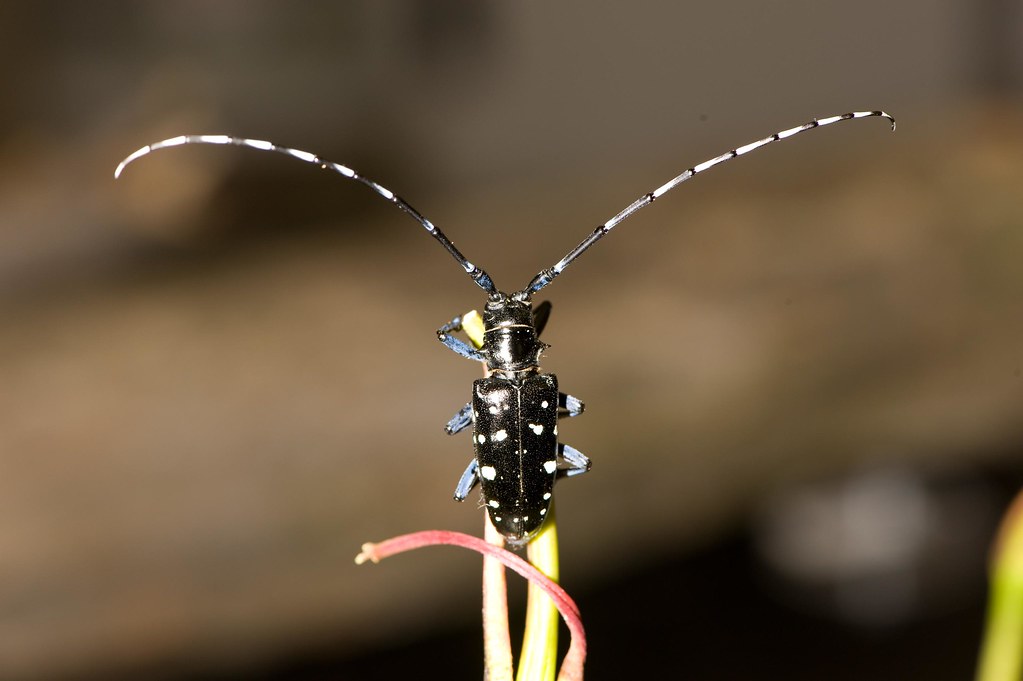Insects & Arachnids
Ticks
If there’s one thing you don’t want to bring home with you after a trip outdoors, it’s a tick. This pesky arachnid thrives in the summer, and it's the primary culprit of Lyme disease in Massachusetts.
Identification
There are two species of ticks common in Massachusetts—the Deer Tick (Ixodes scapularis) and the Dog Tick (Dermacentor variabillis). An adult Deer Tick is substantially smaller than the more common Dog Tick.
However, size is not always a useful indicator since an engorged tick can be several times the size of one that has not fed. And while only Deer Ticks carry Lyme disease, it is far better to avoid ticks altogether than to attempt to differentiate between the two species.
Life Cycle
Deer Ticks have a two-year lifespan, and have three feeding stages—larva, nymph, and adult. Eggs are laid in the spring, and in the summer they hatch into larvae no larger than the period at the end of this sentence. In August, the larva reaches its peak of activity, waiting on the ground until a suitable host (bird or mammal) brushes up against it. The larva then attaches itself to the host. If the host animal is infected with the bacterium that causes Lyme disease, then the larva becomes infected as well.
Once it has fed, the larva does not feed again until it becomes a nymph. Therefore, larvae aren't able to transmit Lyme disease. The larva molts and transforms into a nymph in the fall. The nymph doesn't become active until the following May, and it remains active through July. As in the larval stage, the nymph waits for a host to brush by so it can attach itself.
Once attached to a host the nymph will feed for 4-5 days, engorging itself with blood until it is several times its original size. If the tick was infected with the bacterium as a larva, the nymph may transmit it to its host. Since a nymph is only the size of a poppy seed, it's often goes unnoticed until it's fully engorged. The nymph stage is responsible for the majority of human Lyme disease cases.
Situations & Solutions
Lyme disease is caused by a "spirochete" (corkscrew-shaped bacterium) called Borrelia burgdorferi. The bacterium is transmitted to humans by infected ticks in the genus Ixodes—in Massachusetts, that's the Deer Tick. People contract Lyme disease when an infected tick attaches itself to the skin and feeds. Research suggests that the tick must remain attached for a minimum of 24 hours.
Lyme disease cannot be transmitted from human to human or dog to human. Lyme disease contracted during pregnancy can lead to infection of the placenta but can be safely treated with antibiotics with no negative effect on the fetus.
Lyme Disease Symptoms
The earliest symptom of infection is a rash at the site of the bite (erythema migrans), which can occur from 3-30 days after exposure. In 10% of cases this rash does not appear at all. Because the bite and rash are painless, and because the bite may appear on a part of the body that is hidden from view (e.g. armpit, back), the patient may not be aware of the rash. This rash is typically circular with a clear center resulting in the classic "bullseye" appearance.
Three to five weeks after infection smaller, secondary rashes may occur in some individuals. Other early-onset symptoms can include eye infections, facial paralysis (Bell’s palsy), headache, fatigue, and muscle and joint pain. Late symptoms include swelling and pain in the knees, shoulders, and other joints. These later symptoms generally occur several months or even a year after the initial infection. MDPH fact sheet about Lyme disease
Lyme Disease Prevention
A vaccine for Lyme disease is no longer available. The manufacturer stopped production stating that there was insufficient demand. Because protection by this vaccine diminishes over time, if you received this vaccine in the past, you are probably no longer protected.
The only way to avoid getting Lyme disease is to avoid being bitten by an infected tick. We recommend the following:
- Know Where They Hide: Contrary to popular belief, ticks do not jump or fall from trees; in fact, they’re blind and find their hosts by crawling to the top of low-lying vegetation, such as grass and shrubs, where they wait for passersby to latch onto. And, since tick bites are usually painless, most people don’t even know when they’ve been bitten.
- Watch Where You Walk: Stick to wider trails and avoid overgrown pathways in their preferred habitat: wooded or bushy areas where the ground is covered in high grass or leaf litter.
- Dress Right: Don light-colored socks, pants, and a long-sleeved shirt and tuck in everything (pants into socks, shirt into pants). While this look isn’t likely to win any fashion awards, it will allow you to spot ticks, which can be as small as a poppy seed.
- Bring On the Bug Juice: To help repel ticks and other creepy crawlers, like chiggers, use a DEET-based product on areas of exposed skin. Just remember to follow the label instructions when applying insect repellent!
- Perform Tick Checks: Upon heading indoors, perform a full-body "tick check," taking special care to inspect the areas between your toes and the backs of your knees, as well as your groin, armpits, neck, hairline, and ears. Remember to check your children, pets, and gear, too!
How to Check for Ticks
The best way to reduce your chances of getting Lyme disease is to do a proper tick check after being outdoors (even if it’s just in your backyard). Here’s how:
- Step 1: Scour your clothing. Ticks latch on to clothing from the top of low-lying vegetation, such as grass and shrubs, so pants are a good place to start. Once clothing is removed, throw it in the wash.
- Step 2: Scour your body (or your kid’s body). Ticks like to hide in crevices. Be sure to look under the arms, behind and inside ears, around the hairline, through the scalp, behind knees, between toes, inside belly buttons, and around the waist.
- Step 3: Take a warm shower or bath. This may help dislodge any ticks that haven’t yet attached and also provides another opportunity to look for any stragglers.
Found a Tick?
If you discover an embedded tick, use fine-tipped tweezers to grasp the tick as close to your skin’s surface as possible and pull straight out with steady, even pressure. If you wish to have it tested for Lyme, immediately place the tick in a sealable plastic bag.
Cleanse the bite area with rubbing alcohol and wash your hands with soap and water. Make a note of the date as well as the location on your body where the tick was discovered and call your doctor to determine next steps.
Stay Connected
Don't miss a beat on all the ways you can get outdoors, celebrate nature, and get involved.






